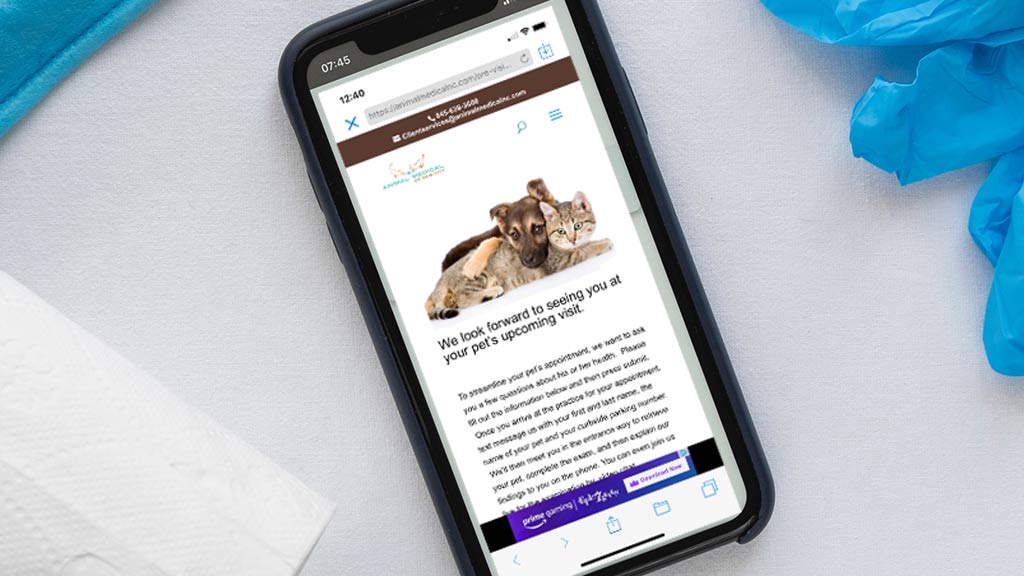Complaints of veterinary employee disengagement, burnout, infighting, and demands for higher wages are widespread, yet most managers persist with the same age-old hiring and training protocols. Are our human resource practices failing to provide sufficient resources to the humans we employ?
In this article:
- Best hiring practices
- Onboarding
- Training
- Coaching
- Reviews
Working Relationships
Employee engagement requires employees to be engaged not just with their jobs, but with their supervisors and with one another. Unfortunately, leaders in veterinary practices are often too busy to connect and engage with those in their charge. To stay organized and keep things fair, leaders schedule time for, and maintain relationships under, an umbrella of practices that we call Human Resources.
I appreciate and understand the effort. Leaders crave some systematic approach to ensuring team members are cared for in accordance to the principals of the practice and labor laws, but in the absence of a meaningful relationship, Human Resources is not a resource, a time saver, or an effective at system of ‘caring’ for an employee; it’s a bureaucracy.
In the article that follows, I’ll try to provide verified data whenever I can, but for my part, let me say that after 24 years of watching and engaging in small animal hospital leadership, nothing is a better prognosticator for team member success than a shared passion for the work, an eagerness to be a part of the organization, and a trusting, respectful relationship between employer and employee. Almost every other employee, leadership, or business model shortcoming can be overlooked or dealt with provided team members come to the table eager to do the job, feel supported and loved by their employer and coworkers, and believe they are treated fairly.
Hiring
In this section we’ll review:
- The impact of a tight labor market on our ability to hire
- How we determine who is right for our job
Impact of a tight labor market
It has been hard to find staff since the beginning of the Pandemic. Reasons include
- Due to COVID fears, some people left the labor market and never returned.
- A post-pandemic surge in demand for staff pushed pay rates higher and employees chased higher wages.
- Frustrated young workers left the labor market all together or chose to self employ.
- Mothers found the cost or availability of childcare prohibitive.
- Available workers have cut back their hours.
Still, the U.S. Bureau of Labor Standards reported in 2022 that unemployment leveled off and most recently, due to Fed rate hikes, has begun to rise. As the U.S. inches closer to recession and some sectors cut staff, it is already easier to find non-credentialed support staff. I would imagine that by 2024, difficulty in finding doctors and credentialed technicians will also ease.
Who is right for the job? Tools Meant to Help You Hire
There are a lot of hiring tools that purportedly improve the chances that an employer will make the right decision and onboard a candidate that will go on to become a stellar addition to the team. Unfortunately, even corporations that invest a lot of time, money, expertise, and tools in the hiring process still have a failure rate of 50%.
In my experience, I have tried, or talked to practices that have tried, many tools to improve the hiring success rate. Though data and anecdotal evidence support the use of some general standardized job testing, cognitive ability tests, personality tests, tricky interview questions and working interviews all are problematic for a number of reasons:
General Standardized Job Testing:According to the Bureau of Labor Statistics, using results of standardized job tests decreases the turnover rate of hired applicants. Additional unbiased data on the topic is hard to find. Still, given the success of general standard job testing, however uneven, it’s likely that technology and innovation will bring more testing to small business owners. In the meantime, it appears that research on the success of GSJT has been limited to labor very different from veterinary office work.
Cognitive Ability Tests: Cognitive abilities, those traits defined as an applicant’s intelligence, creative thinking, pattern recognition, and overall ‘smart’s, are good indicators of how well a new hire will perform, provided that he or she has been hired to do a job they find interesting and want to do. The problem is that we typically don’t get a lot of valedictorians applying for our jobs and most Cognitive Ability Tests are designed for applicants that have strong math backgrounds and experience taking intelligence assessment tests. Consequently, finding a test that doesn’t bias towards more privileged individuals is hard to find. You can be the judge for yourself. Try one free of charge here.
Personality Tests:There is not a lot of widespread support for the use of personality tests as the determining factor in hiring, yet many HR directors persist in their use. In my past role as an administrator, we considered using personality tests as a hiring tool, but decided to try them out first with ourexisting employees. The result: most of those in our employ were wrong for the job! We gave up without trying. My sense is that the level of expertise one needs to effectively administer and then evaluate a personality test in the hinging process is beyond the skill and experience level of most veterinary practice managers.
Tricky Interview Questions: Many managers pride themselves on a few tricky interview questions designed to what: surprise the candidate? Catch her off guard? Reveal some otherwise hidden flaw? Tricky interview questions put the applicant ill at ease and discourage honest answers and dialogue. Most professional hiring firms discourage them. Interview questions should tee up insight into the applicant’s strengths, needs, interests and most importantly conversation between the interviewer and the interviewee. For my part, I like to fashion questions based on the information learned from the applicant’s resume and my own, genuine interest in their past:
- You worked with Great Apes in the Congo?! You have to tell me about what that was like!
- You’ve had training in dog behavior? I’ve always wanted to do that. What sorts of things did you learn?
- A college poll vaulter! I’m fascinated by the concept of team in sports versus team at work. Did you have a good experience being part of the poll vaulting team? Did your coach have anything to do with that?
I think that questions about the applicant’s past successes put her most at ease and give her the best chance of revealing her true strengths and whether or not she would be a fit.
Working Interview: In theory, they seem like a good idea: if you’re going to buy a new car, why not first see how she rolls on a real road? The problem with working interviews is that applicants are usually dumped off at the front desk or in treatment with little structure. Because you’re already short a team member(s), existing employees are stretched thin and can’t provide consistent oversight on the process. Applicants usually have to spend their working interview watching from the sidelines or backing up against a wall to stay out of the way. We don’t get a chance to learn about the applicant and what the applicant learns about us…well, I’m not sure she’s seeing us at our best.
The Value of Mission in Hiring Employees
Mission statements lectures, often known as the Dramamine of CE, have put far too many managers to sleep. It’s too bad. An understanding, a personal story, a mental image of what best characterizes your patient and client care, your impact on the community, or your relationship with your employees can help you distinguish yourself from competitors and make you stand out in the world of business in general. I have written a guide to help you create a mission statement for your business. Please review it and use the ideas you generate to improve your hiring process. When hiring, use your mission statement:
When writing the Employment Ad: Building a mission statement helps one to visualize and articulate your business’s unique value. This is helpful when writing an ad that will distinguish itself from your competitor’s. When writing an employment ad, make sure that it is compliant with state labor laws regarding pay transparency.
For Job Descriptions: Veterinary managers often dismiss the value of job descriptions. They see them as documents stating the obvious, “Why do I have to write down what a receptionist does? I know that already. She has to do everything that needs to get done!” What these managers miss is that job descriptions help leaders understand:
The specifics of the job: You don’t just want someone to pick up a phone. Machines do that nowadays. You want someone to pick up a phone an what? Create a positive first impression? Establish a relationship? Distinguish your hospital from your competitors? Convert a phone shopper? Turn a question about healthcare into an appointment? When written thoughtfully, job descriptions help the employer to zero in on the fundamental responsibilities of the role and ‘picture’ the right person for the job.
The amount of time the job will take: Many small animal hospitals believe they need a practice manager, but a job description for the role would quickly show that there is not 40 hours per week of work for a manager in a small veterinary hospital, There’s barely 20. This information is vital when thinking about pay and helping with a conversation about expectations.
How valuable the role is: You might argue that every hospital needs someone to answer a phone. If answering a phone is all you need done, you can pay (and probably should) pay minimal wage for the position, but if your expectation is to hire and train the employee for lead generation, a role that could bring in thousands of additional dollars of revenue per month, then a higher value for the role can be substantiated, along for more money to perform it.
Where to look for applicants and how to select them: When hiring receptionists, many veterinary hospitals don’t want someone to just answer phones, they want someone to act like a switchboard operator for 911. They want the individual to understand how to triage, how to correctly schedule lab tests, to foresee potential complications with some cases and to schedule in some safe time buffers; to know the strengths and weaknesses of every day’s team and to schedule accordingly. In short, what they really want is someone with all of the knowledge of the veterinary owner sitting up front and working the desk.
If that’s the case, why not hire pre-vet students or wannabe techs for role? These individuals are more likely to have an affinity for the subject matter and enough experience under their belt to handle the tough responsibilities you’d like them to master. Understanding what you want helps employers know what qualities they are looking for an where to potentially look for applicants that possess those qualities.
When formulating interview questions: You don’t want to hire people who are qualified to work, you want to hire people who are qualified to work inside your business and as part of your team. During the interview process, use the applicant’s resume to base questions around experience that is most in line with your mission. Here are some examples:
- “One of our core values is excellence and I see that you used to coach basketball. Was excellence an aim of yours when coaching your team? Talk to me about that.”
- “We work hard to build a team that cooperates with one another. Having worked at your last hospital for 12 years, I would imagine you have some thoughts on how teams can work well together. Do you have any advice for me on that topic?”
- “We believe in a Fear Free experience at our hospital. I see that you are certified Fear Free. Why did you pursue that credit?”
For the Working Interview and Onboarding: It’s one thing to talk to an employee about the job, but imagine what the prospective employee sees when they tour your facility, do the working interview, or experience their first days on the job. Do you think that what you’ve told them about the job and what they will see and hear will align?
When touring a prospective employee through the facility, help them to spot the mission in action; in other words, don’t show them the labor, show them the labor of love. Similarly, explore the candidate’s thoughts and potential engagement with your culture with interview questions inspired by your mission statement.
Does Experience Matter?
Experience is only the 14th best predictor of job performance. Remember that you can always teach an employee what to do, but you can’t teach a passion for what your business does. For more on the value of experience, visit this link.
References
Great candidates always have spectacular references, but remember that a lot of worthy candidates may only have lukewarm ones. That’s because working day-to-day, side-by-side with someone over several years can darken your perspective. Even the best characters aren’t immune to the pettiness of office life. If you liked the individual at the interview, but the references were curt, don’t necessarily dismiss the applicant. Do a bit more work to see if he or she continues to give off good vibes.
Everyone likes her
Holding out for someone that everyone likes sounds like it’s a violation of some kind of labor law, but I’m not talking about hiring for a lack of inclusion, which I think would be a step backwards if your business wants to keep ideas on competitiveness enriched and diverse. I’m talking about hiring people who are all similarly impassioned by what it is you do, people that coworkers can trust, and candidates that coworkers want to know and help.
Of all the hiring practices I have experimented with over the years, hiring those that were universally liked by the team were the ones that had the highest likelihood of success. If 100% of my employees like the liked the candidate, then there was a 100% chance of her success. Thereafter chances of failure increased proportional to the percentage of team members that had misgivings about the candidate. By the way, this was also true for any candidate that was hired by a rogue leaders that thought their gut was smarter than the feedback they got for their team. It has been proven that leaders that sidestep agreed-upon rules for selecting candidates in favor in favor of their gut instinct increase candidate failure rate, not improve it.
Streamlining the hiring process
As a consulting company, we have often been asked to step in and assist practices with hiring. Over the years, we have learned how to streamline things considerably. You can read our tricks for using the hiring platform Indeed to quickly search for candidate and automate the process of getting rid of the ones who are just throwing their resumes at job offers hoping that something sticks. You can read How to Hire Veterinary Support Team Members Efficiently for a step-by-step guide.
Working Interviews
Most practices have prospective employees come to the practice and ‘hang out’ for a few hours to spend time with the team. While this is an opportunity for team members to meet a candidate and determine if they like him or her, I don’t believe it is ideal. Usually team members are already very busy (hence the need to hire in the first place) and having an extra body hanging around is neither enjoyable for your existing team members or an especially qualitative way of introducing the candidate to what employment will be like.
I think it’s better to tour the individual, show them the practice, and most importantly show them your mission in action. Then, offer to step in for an employee whilst they take over the tour and get to know the candidate. This signals to the candidate that you respect your existing employees. It’s also a great way for your team to get to know the candidate in a relaxed setting and, if they recommend him or her for hire, to have investment in the candidate’s success.
Onboarding
There are two parts of the onboarding process that I believe should be improved:
- Reviewing the employee manual
- The job as described versus the job as experienced
Reviewing the Employee Manual
Picture it.You bought flowers, paid for dinner, picked out the perfect ring, even got down on one knee, then on the big day, all the air went out of the balloon when you handed your prospective partner a prenup. That’s what comes to mind when I think of our first day with the employee as we go over the employee manual. Even if the two of you can manage to stay awake through this long, page-by-page process, just think about the tone of the messaging:
Cute Critters Animal Hospital (hereafter CCAH) is an at-will employer, which means that employment can be terminated, with or without cause, at any time at the option of the employee or CCAH. No employee has the power or authority to enter into any agreement of employment, for any specified period of time, or to make any representations or agreements contrary to this policy unless the agreement is in writing and approved by the Owner.
While I appreciate the litigiousness of the world we live in; whilst I understand that value of reviewing important documents like the employee manual with employees, there has got to be a better way to onboard employees than squashing every previous conversation beneath this overweighted pile of legalese. Here are some tips on how to improve this experience:
It doesn’t have to sound like an attorney wrote it.
While employee manuals help to protect employers from labor law infractions, they don’t have to sound like there’s about to be an indictment. Work with your attorney to soften the employee manual’s language so it’s not so aggressive and reads more positive.
Show but Don’t Tell
Having a written employee manual doesn’t mean that you have to read it to the employee. If you don’t want to go to the trouble and expense of rewriting your manual, create a one-or-two page review sheet that briefly describes the manual’s contents and keeps things positive. At the end of the review, give the employee a copy of the full manual and leave it to them to read things on their own.
Create an introductory video
You can also save yourself the time of having to go over the manual again and again by creating a video of its contents. Record various team members talking about policies contained in the manual and play the tape to candidates on their first day. Keep the tone upbeat and welcoming in line with the narrative that you’ve been underlining during the entire hiring process. When they are finished, hand them the written version.
The job that’s been described versus the job that’s experienced
If you are a large and/or busy practice, what you say you are and what you appear to be through the eyes of a fresh employee can be very different. In fact, releasing your latest hire onto the floor may feel akin to throwing a milk bone into a pack of dogs. If your team is like so many other veterinary hospital groups these days, it is rushed, stressed, potentially uncivil, bad mouthed, and brusque. Though it will take you some time to accomplish this, you need to remind your team to see and do their work in the context of the mission, not in the context of ‘get through it however it is you can’. Certainly not an easy goal, but an important one if you want to ensure that your latest hire is a step towards your goals, not an addition to your problems.
Training
I doubt I have to do too much to convince you our typical training-manual-approach to getting employees up to speed is not ideal. Consider these ideas that some innovative hospitals have found helpful:
Train in Context
I’m willing to bet that unless you are a veterinarian, you weren’t trained in a linear, organized fashion; you were, like most of us, thrown into things and expected to learn by watching, by reprimand, and by taking initiative. While that sort of training sounds harsh, there is a lot of evidence to suggest that we learn better in the context of what it is we are trying to learn, rather than to be introduced to it in a classroom-like setting. In other words, it’s better to learn how to make bread by working alongside a breadmaker, not by reading about how to make bread. Similarly it’s better to learn how to be a CSR or assistant by working alongside these individuals. If you are having trouble keeping your team members on schedule with a linear approach to training like you might find in a manual, why not lean more heavily on an apprentice type of training where team members just follow and work alongside your most experienced, best employees? My sense is that they will not just learn what they have to do, but how you want them to do the job and how to prioritize duties. Additionally, these factors have also been identified by experts to be critical to learning:
- Trust: Research shows that the best teachers are ones that are trusted by their students.
- Patience: Students learn better when teachers allow them the time they need to understand and absorb what it is they are trying to learn.
- Varied communication
- Capturing and holding a student’s attention is important. Provide the student:
-
- Short videos to watch,
- Written material,
- Tests that not only evaluate learning, but provide students a chance to show off their new-found learning,
- Playing to the student’s existing interests
- Varied ways of talking to them (standing still, pausing before saying something important, dialoguing instead of lecturing, etc.).
All of these ideas help vary the lesson, hold the student’s interest, and help her to learn better.
Training CSRs
An important observation of mine is our struggle to teach CSRs. A big issue is that we are hiring for an admin person when in fact we are looking to hire a mini veterinarian, someone we expect can triage a wide variety of cases, schedule each appropriately, understand what is and is not urgent, etc. If your hospital wants the people answering the phones to have an extensive understanding of veterinary medicine try these ideas:
- Hire for an interest in veterinary medicine
- If you want a receptionist to know veterinary medicine, hire someone with an interest in veterinary medicine, not administration.
- Cross train all assistants to work as receptionists
- I have observed more team harmony and patient scheduling success when assistants are cross trained to work at the desk.
- Train your CSRs as apprentices to veterinarians
- When CSR training includes ample time to trail veterinary professionals in the room, they better learn the medicine, urgency and priorities of what you would like them to learn as client care specialists.
Coaching
Many managers think they can shape the behavior of their employees; that they can grow good behavior and minimize bad. While that may be an ambition of many, it’s not one that is too often realized. Here are some major considerations when interfacing with your staff to shape behavior.
Trust
Most employees are unwilling to be fully honest with their employers, not because they are dishonest, but because they are afraid of the consequences, of angering their employer or, more often, of disappointing their employer. Leaders really need to take this bit of advice to heart. Many employees are not or feel they cannot be honest with their superiors. As a leader, you must be proactive in building trust with your employees, that is to say that an Open Door Policy means that you walk through your door to them, not the other way around. You have to meet employees on their turf, ask good questions, and listen and look hard for truths they may be afraid or unwilling to share.
Punishments and Rewards
We lean heavily on things like write-ups and reprimands to shape employee behavior; we also dole out compliments from time to time and deliver up pleases and thank you’s as we see fit. You and your management team should evaluate the efficacy of both. In my long career of observing how we shape behavior, I have seen the merit of four kinds of conditioning methods: positive/negative rewards and positive/negative punishments. Meet as a leadership team, identify what it is you are trying to do, and reestablish which methods work best and when.
‘Fixing’ Employees
Have you succeeded at putting a long-term dent in tardiness? What about an employee’s interest in gossiping or chronic negativity? As a manager, you can outline boundaries to employee behavior, but too often some of the behaviors you are trying to shape or change would be challenging for a psychologist to fix, let alone you and your limited experience as a hospital manager. Aggressiveness, pessimism, fear biting, gossiping, timidity…these behaviors go far deeper than you have the experience or time to fix. You are better determining if you can live with them or learning how to live them rather than trying to fix them, since any hope of a fix, short of their own invested effort to change, is unlikely.
Reviews
Research shows that annual reviews are time biased, take a lot of time, erode employee trust, and don’t make an appreciable difference in employee morale, productivity or growth. I would agree. For more information read Annual Reviews Time Biased
Rather than reviewing or even coaching an employee one-on-one, why not review or coach groups or teams of employees? We all work together to do a job, why not then give feedback to the whole group that is delivering the service.
I have been experimenting with group reviews and coaching for more than a year now and am convinced that it works better. Here is a brief list of reasons why:
- The feedback is heard as an effort to help the group succeed, not as a slight on individual effort
- The feedback feels less personal since it is more clearly targeted at work goals
- Individual success at veterinary hospitals is almost always predicated on how others around us perform. For example, CSRs can only control client wait time in the lobby if veterinary assistants work hard to load rooms. Veterinary assistants can load rooms only control room loading if veterinary technicians treat patients quickly, etc.
- Team feedback, as opposed to individual feedback, is more in line with the coaching metaphor and identity as a team.
Conclusion
Reconfiguring your practice’s hiring, onboarding, training and coaching practices is not going to be hard. My sense is that there is too much of it that you already dislike or feel is ineffective. Scrapping any of it and rebuilding it along the recommendations contained should be a fun and productive endeavor.










